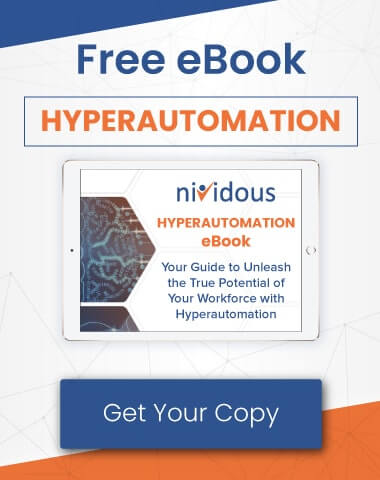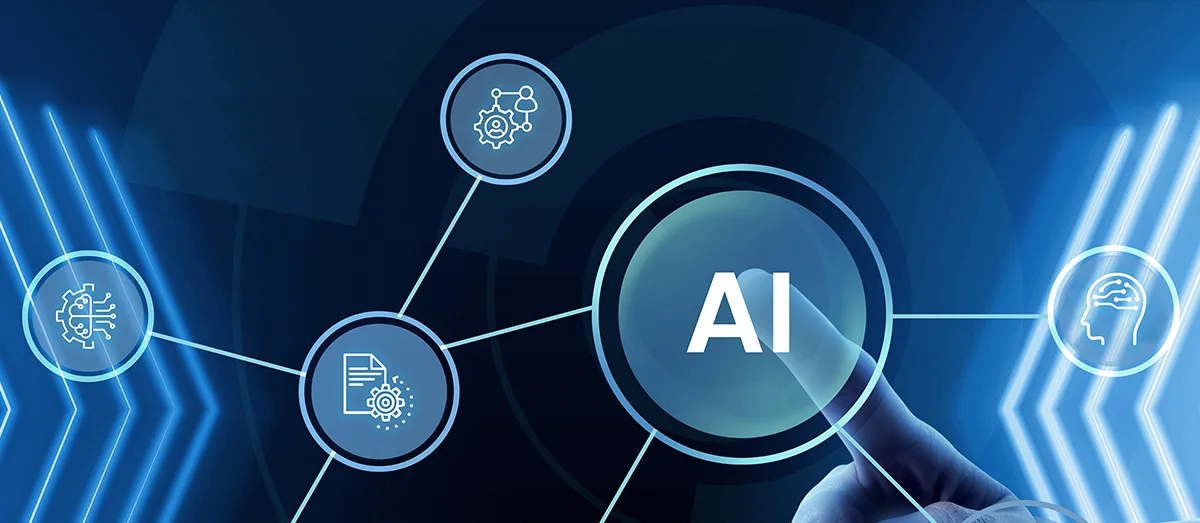Leaders want faster decisions that hold up under scrutiny. Markets move quickly, risk shifts by the hour, and teams juggle more tools than ever. Spreadsheets and siloed dashboards cannot keep pace with the volume and velocity of work.
Enterprise AI changes the tempo. It connects data, evaluates options, and recommends next steps that align with your goals. The payoff is confident choices, shorter cycles, and clear accountability across every department.
This guide explains how Enterprise AI supports decision quality at scale. You will see where it fits, which tools matter, and how finance, HR, operations, and customer service teams turn insight into action. An integrated platform reduces decision latency by unifying data, models, and execution in one place, which cuts handoffs, preserves context, and turns recommendations into tracked actions.
Why Enterprise AI Matters Now
Decision latency is expensive because it slows revenue, increases cost, and introduces risk. Enterprise AI reduces latency by pairing machine reasoning with your policies and constraints, which produces timely guidance that teams can trust.
The advantage compounds as more decisions flow through the same patterns. Each cycle creates feedback, and each outcome improves the next recommendation, so momentum builds without adding headcount.
Connected Data With Context
Great decisions start with complete, relevant data. Most organizations already own the data, which is stored in ERPs, CRMs, HRISs, ticketing tools, and data warehouses. The challenge is context.
Enterprise AI connects to these sources and adds meaning. It resolves entities such as customers, employees, and vendors. It normalizes metrics and timelines. It stores memory so the next decision incorporates the results of the last one. With the business context applied, models evaluate the whole picture instead of a single screen.
The Enterprise AI Stack You Will Use
Expect a modular stack that fits your environment. Start with secure data integration and a semantic layer that defines shared business terms. Add model services for forecasting, classification, retrieval, and optimization. Use intelligent automation to convert recommendations into actions inside your systems.
Two capabilities deserve special mention. Generative AI creates clear summaries, what-if narratives, and stakeholder-ready updates. Agentic AI coordinates multi-step work, monitors progress, and adapts as conditions change. Together, these capabilities transform static analysis into living decision flows.
Governance That Builds Trust
Executives will not scale decisions without transparency. Governance keeps Enterprise AI reliable by recording data lineage, model versions, and decision rationale, enforcing role-based access, and adding human-in-the-loop checks for high-risk choices. Explainability sets platforms apart by showing why a recommendation was made in plain language, citing data and policy rules, and preserving audit trails for review.
A Roadmap You Can Execute
Start small and scale with intention. Pick a repeatable decision with a clear owner. Define success metrics up front. Run a focused pilot for 4–6 weeks with weekly checkpoints. Capture outcomes, streamline steps, and convert what worked into reusable components so use cases two and three launch faster.
Use Nividous to cut the lift. Prebuilt connectors plug into ERP, CRM, HRIS, ITSM, and data warehouses. Integrated governance tracks lineage, access, and plain-language rationale in one place. Low-code workflow automation and RPA bridge system gaps. Reusable agent skills and templates let teams clone patterns across departments without starting from scratch.
Outcomes from recent pilots:
- Finance pilots shortened the month-end close by about 30 percent.
- HR pilots reduced time-to-hire by about 25 percent.
- Service pilots increased first-contact resolution by about 15 percent.
- Operations pilots lowered expedite costs and improved on-time performance.
Build a cross-functional working group across analytics, IT, security, and the business. Treat Enterprise AI as a program with a shared backlog and shared guardrails. Publish results, retire outdated steps, and make the new path the default.
Finance: From Close to Forecast With Confidence
Finance teams must translate data into direction while managing cash, risk, and performance under tight timelines. Enterprise AI supports this mandate with consistent analysis and rapid recommendations.
How Enterprise AI Helps
Enterprise AI helps teams close faster by detecting anomalies in journal entries and reconciliations. It improves forecast accuracy by blending historicals with drivers such as price, seasonality, and pipeline quality. It prioritizes working-capital actions by ranking payables, receivables, and inventory decisions against cash goals. When variances appear, Generative AI explains the root cause in plain language, and Agentic AI opens tasks in your ERP, routes approvals, and verifies completion on time.
Data and Tools Involved
Finance initiatives draw on core ERP data, subledger detail, bank feeds, CRM opportunities, and supply signals. Teams use feature stores and retrieval-augmented generation to supply the current context. They apply classification to find anomalies, time-series models to forecast, and optimization to balance cash and spend. Low-code workflow automation and RPA orchestrate outcomes when systems lack APIs.
Benefits That Matter
The finance organization shortens closes, tightens cash control, and delivers clearer variance narratives. Leaders receive early warnings instead of end-of-month surprises. Analysts spend more time shaping the plan and less time chasing numbers.
HR: Better Hiring, Smoother Onboarding, Stronger Retention
HR decisions shape culture and capacity. Hiring, onboarding, and retention require speed and fairness, and Enterprise AI raises the bar on both.
How Enterprise AI Helps
Enterprise AI screens applicants against job-relevant criteria with transparent scoring that hiring managers can audit. It creates personalized interview guides, assessments, and summaries that align with competencies. It plans workforce needs by aligning demand signals with skills data. Agentic AI coordinates onboarding tasks across IT, facilities, and training so nothing is missed. Generative AI produces tailored welcome plans and policy summaries that employees can understand and use.
Data and Tools Involved
HR use cases combine ATS and HRIS records, learning-system data, performance history, and workforce plans. Teams use explainable models for screening, constraint-based planning for capacity, and chat interfaces to answer employee questions. Integrations with identity management trigger account setup and permissions automatically.
Benefits That Matter
The organization reduces time to hire, raises the quality of hire, and lowers early attrition. New employees reach productivity sooner. HR partners shift from ticket processing to strategic advising.
Launch Your Enterprise AI Decision Pilot
Explore a guided walkthrough of decision flows in finance, HR, operations, and service. Learn how connected data, Generative AI, and Agentic AI raise decision quality without adding complexity.
Operations: Plans That Adapt When Conditions Change
Operations sit at the intersection of demand, capacity, and constraints. Plans degrade when reality shifts, and Enterprise AI keeps plans current.
How Enterprise AI Helps
Enterprise AI predicts demand with models that learn from orders, seasonality, and external signals. It recommends production schedules and staffing plans that respect constraints. Agentic AI rebalances work, updates schedules, and notifies stakeholders when the plan drifts. Generative AI provides clear impact summaries, options, and tradeoffs so leaders can decide quickly.
Data and Tools Involved
Operations teams use order history, inventory, lead times, staffing rosters, service-level targets, and external feeds such as weather or events. They apply forecasting, optimization, and simulation to evaluate scenarios. Workflow automation pushes approved changes into WMS, MES, and scheduling systems.
Benefits That Matter
Service levels rise, expedite costs fall, and asset utilization improves. Teams spend less time firefighting and more time improving throughput.
Customer Service: Answers That Resolve, Not Repeat
Service decisions influence loyalty every day. Agents need context, guidance, and clear steps, and Enterprise AI brings all three to the desktop.
How Enterprise AI Helps
Enterprise AI surfaces the full customer context when a contact begins. It recommends the most likely resolution with confidence scores that supervisors can review. Generative AI drafts replies that match tone and policy. Agentic AI files tickets, triggers returns, adjusts entitlements, and verifies completion across systems. Knowledge bases stay current because automated updates cite sources and link to resolved cases.
Data and Tools Involved
Service teams combine CRM cases, product telemetry, order history, entitlement records, and knowledge content. They use retrieval-augmented generation to produce accurate answers, classification to detect intent and sentiment, and journey analytics to spot friction. Back-office actions are automated with connectors and RPA where native integration is limited.
Benefits That Matter
Resolution times decrease, first-contact success increases, and experiences remain consistent across channels. Leaders gain real-time visibility into trends and root causes that drive continuous improvement.
Build Confident Decisions With Nividous
Nividous helps organizations turn insight into action with an intelligent automation platform that brings Enterprise AI to daily work. The platform integrates robotic process automation, low-code workflow automation, intelligent document processing, Generative AI for clear narratives, and Agentic AI for multi-step execution. Teams receive connected data, transparent recommendations, and automated follow-through inside the systems they already use.
What you can expect includes faster decisions with traceable rationale, fewer handoffs and less rework across departments, and consistent outcomes that align with policy and risk. You also gain a reusable stack that scales from one use case to many.
See Enterprise AI in Action
Book a guided demo tailored to your finance, HR, operations, or service use case. We will map your data sources, show explainable recommendations, and outline the automated steps that follow with Generative AI and Agentic AI. You will leave with a pilot plan, an estimated timeline, and clear success metrics.




